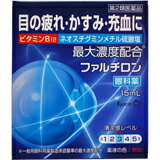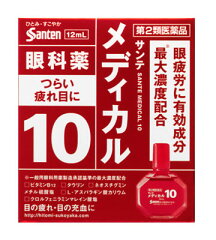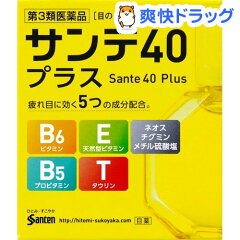Here’s a sample code in Java to handle command line parameter.
Continue reading Java: Handle Command Line ArgumentAll posts by Kenji
Java: Get Keyboard Input
(日本語) 引越業者の比較 アリさんマークの引越社(引越社関西) と サカイ引越センター
ネオスチグミンが最大濃度配合された目薬
ネオスチグミンが最大濃度配合された目薬を探してみましょう。 「ネオスチグミンって何?」という方は目薬に含まれる成分の効果をご覧ください。
最大濃度
そもそも最大濃度ってどれくらいなんでしょうか。 この記事を書いている時点で、一般用眼科用製造販売承認基準という基準では 0.005% です。 というのも 一般用眼科用製造販売承認基準で最大濃度配合と記載されている市販の目薬の説明書を見ると ネオスチグミンメチル硫酸塩 の含有量が 0.005% または 100ml 中 0.005g と記載されているからです。
ネオスチグミンメチル硫酸塩を最大濃度含んだ目薬
ネットで検索したところ 下記のものが見つかりました。 本当はもっとたくさんありますが、書ききれません。
第二類医薬品
第三類医薬品
こうして見ると 「ネオスチグミンメチル最大濃度配合」 というのは さほど特別なことではないと思えてきませんか?
目薬を選ぶ基準
ネオスチグミンメチル硫酸塩について差がなかった上の製品について 別の視点から比較してみましょうか。 血管収縮材なんて絶対にいやだ! という人は第三類医薬品ですね。 ではひとまず上に挙げた第三類医薬品について比較してみましょう。 単位はパーセントです。 パーセントで表示されていない製品については 1ml を 1g と仮定して計算しています。
| ロートゴールド40マイルド | マイティアフレッシュ40 | サンテ40ゴールド | サンテ40プラス | |
|---|---|---|---|---|
| 酢酸d-α-トコフェロール (天然型ビタミンE) | 0.05 | 0.05 | 0.05 | 0.05 |
| メチル硫酸ネオスチグミン | 0.005 | 0.005 | 0.005 | 0.005 |
| パンテノール (ビタミンB5) | 0.1 | 0.05 | 0.05 | |
| ピリドキシン塩酸塩 (ビタミンB6) | 0.05 | |||
| L-アスパラギン酸カリウム | 1 | 1 | ||
| アラントイン | 0.1 | |||
| マレイン酸クロルフェニラミン | 0.03 | 0.03 | 0.03 | 0.03 |
| タウリン | 1 | 0.5 | 1 | |
| コンドロイチン硫酸エステルナトリウム | 0.5 | |||
| イプシロン-アミノカプロン酸 | 1 |
大容量を選ぶならロートゴールド40マイルド (ロート製薬)です。 ほかに気にするとすればビタミンB5、タウリン、アラントインですね。 組織代謝が活発になるそうです。 アスパラギン酸カリウムは酸素を眼に送るのに役立つそうです。 酸素が大切っていう話は『目は1分でよくなる!』に載っています。 コンドロイチンは角膜保護、アミノカプロン酸は炎症を抑える働きがあります。
では次に第二類医薬品を見てみましょう。
| スマイル40EX ゴールド | デジアイ | ファルチロン | サンテメディカル10 | |
|---|---|---|---|---|
| レチノールパルチミン酸エステル (ビタミンA) | 33000単位 | |||
| 酢酸d-α-トコフェロール (天然型ビタミンE) | 0.05 | |||
| メチル硫酸ネオスチグミン | 0.005 | 0.005 | 0.005 | 0.005 |
| フラビンアデニンジヌクレオチドナトリウム (活性型ビタミンB2) | 0.05 | |||
| パンテノール (ビタミンB5) | 0.05 | |||
| ピリドキシン塩酸塩 (ビタミンB6) | 0.03 | 0.1 | 0.1 | 0.05 |
| タウリン | 0.1 | 1 | 0.5 | 1 |
| ナファゾリン塩酸塩 (ビタミンB6) | 0.003 | 0.003 | ||
| L-アスパラギン酸カリウム | 1 | 1 | 1 | |
| マレイン酸クロルフェニラミン | 0.03 | 0.02 | 0.03 | |
| 塩酸テトラヒドロゾリン | 0.01 | 0.03 | ||
| シアノコバラミン (ビタミンB12) | 0.02 | 0.02 | ||
| コンドロイチン硫酸エステルナトリウム | 0.1 | |||
| イプシロン-アミノカプロン酸 | 1 | |||
| グリチルリチン酸二カリウム | 0.1 |
ビタミンAだけパーセント表記にしていません。 スマイル40EXは市販目薬で唯一ビタミンAを含んでいるものだそうです。
有効成分がたくさん入っているのはよさそうに思えますが、たとえばナファゾリン塩酸塩には血管を収縮させて充血をとる働きがありますので、健康的にいいのかは疑問です。
ちなみに私は スマイル40EX マイルドを使っています。 よく効いている気がします。
How to Develop Test Code in Test-Driven Development
The reference book is Test Driven Development By Example [ Kent Beck ], and the Japanese version is テスト駆動開発入門.
This time, let’s talk about the essence of testing. I wrote down the important points while writing tests, implementing code, and adding functionality. This is a continuation of the procedure for writing tests first in test-driven development.
Write Asserts First
When writing tests, it seems best to start with Asserts. Indeed, starting from the goal is a common practice.
When starting with Assert, the first two things to consider are:
- What is the right answer? (What makes it correct?)
- How am I going to check it? (How do I check it, and what value do I check?)
Looking at the examples in the book, you can see that they start with these two points, write tests using non-existent classes from the Assert part, and finally complete the tests.
Test Data
According to Kent Beck, there are also rules for the data used in tests. It is said that easily understandable data, such as 1 or 2, should be used if possible.
Also, depending on the system, real data may be used in testing. Kent Beck mentions that real data is particularly effective in the following cases:
- When testing real-time systems that use data output from other systems in operation.
- When comparing output between the program before the change and the program after the change.
It’s not a particularly difficult topic, but let’s organize it in our minds for now.
Rules for Implementing Tests
Test code may deviate from general programming rules. For example, magic numbers. This is because the purpose of testing is to complete the implementation code and obtain feedback from the test as needed. As mentioned in the “MONEY EXAMPLE” chapter, they initially completed the test by using magic numbers.
The methods enumerated in the “MONEY EXAMPLE” chapter are explained again. There are “Fake It” and “Triangulation,” but the one you must understand first is “Fake It.”
Fake It (‘Til You Make It)
An example from when a testing framework was created in Python is introduced on page 102 of the English version. The part where the test code gradually changes from being fake is reprinted.
Kent Beck lists the following two merits of “Fake It.” The second one was also mentioned a little earlier.
- First, by making the test green, you can be confident in your code. You don’t have to worry unnecessarily.
- Even if it’s obvious, by writing tests and making them green, you can easily see what functionality is currently lacking.
From there, the discussion continues to “Triangulation.” Since it’s a review of the story that appeared in the “MONEY EXAMPLE” section, I’ll skip it.
Adding Parameters
There is an example of how to write test code when adding functionality after the test is completed, such as changing from sum(int value) to sum(int[] values). Of course, it’s an artificially created method, so there are some unnatural parts, but you should grasp the overall flow.








